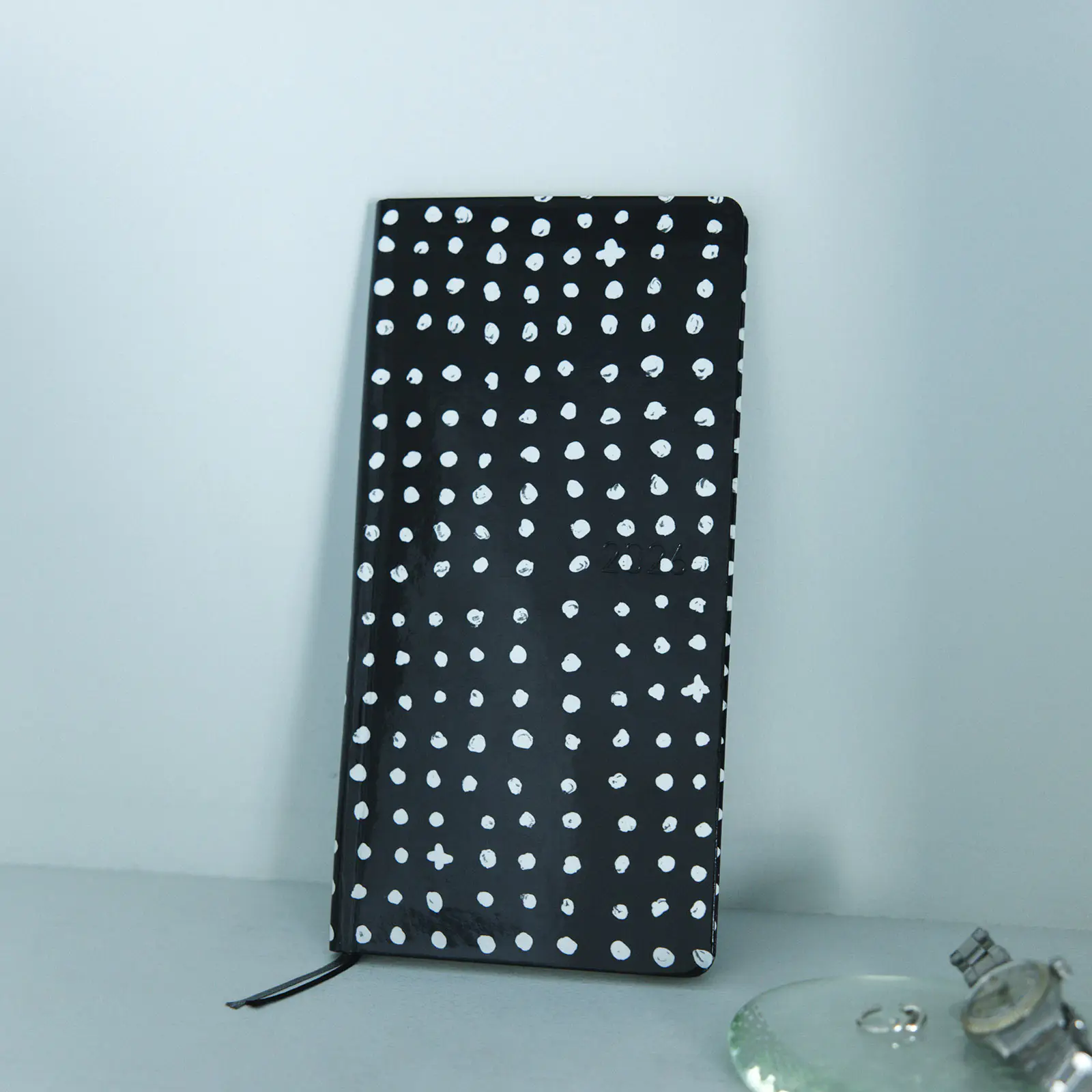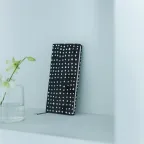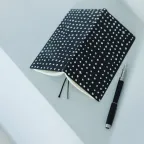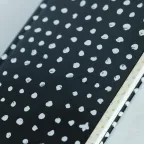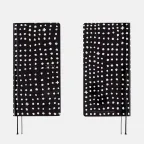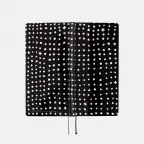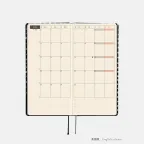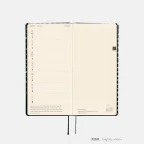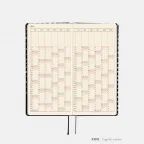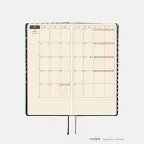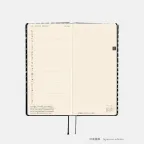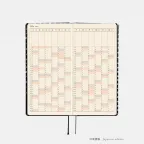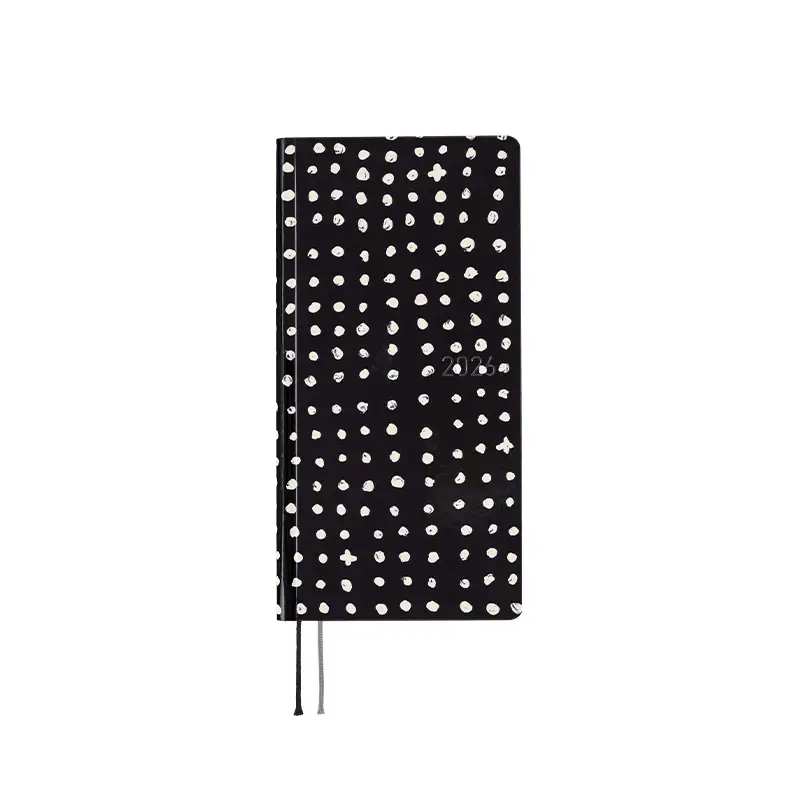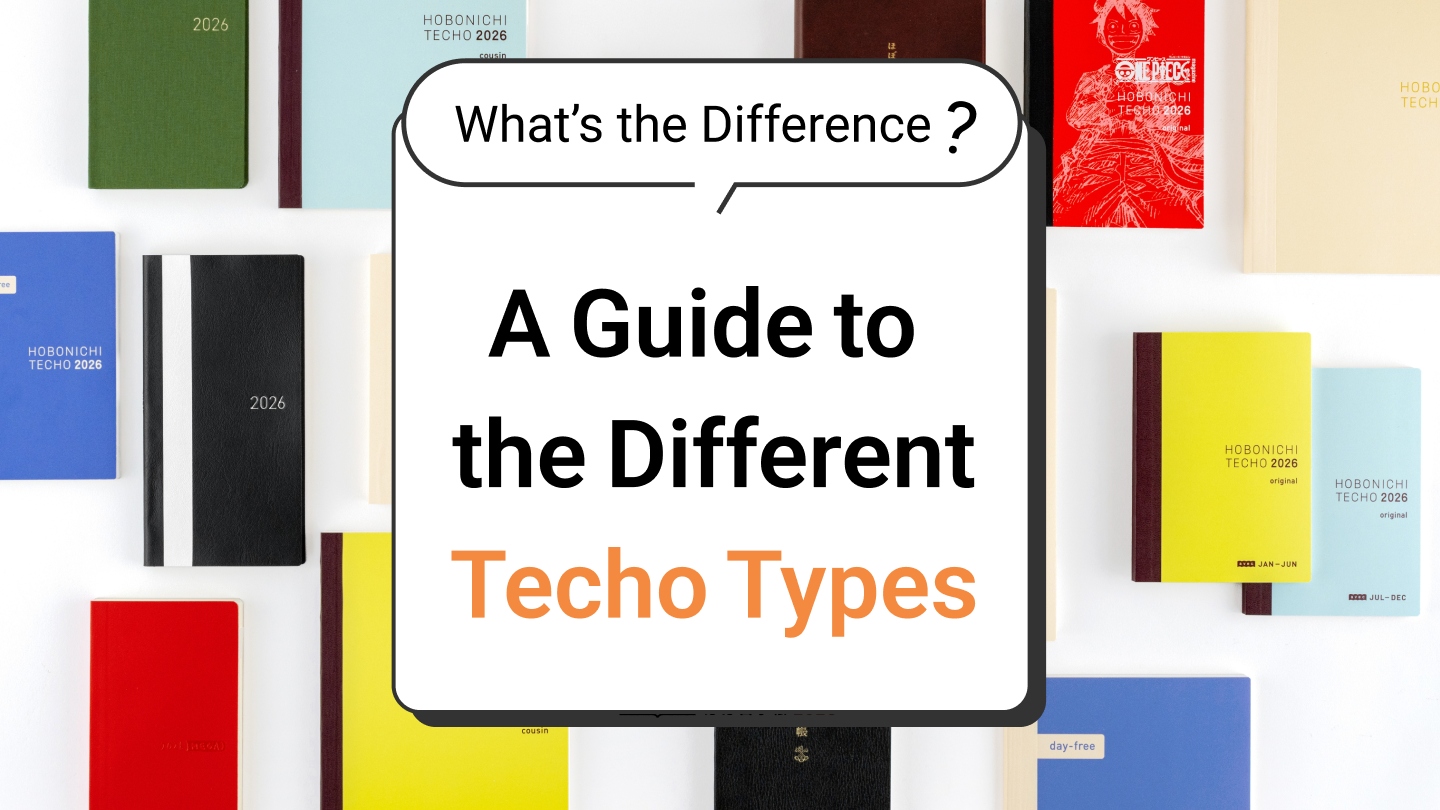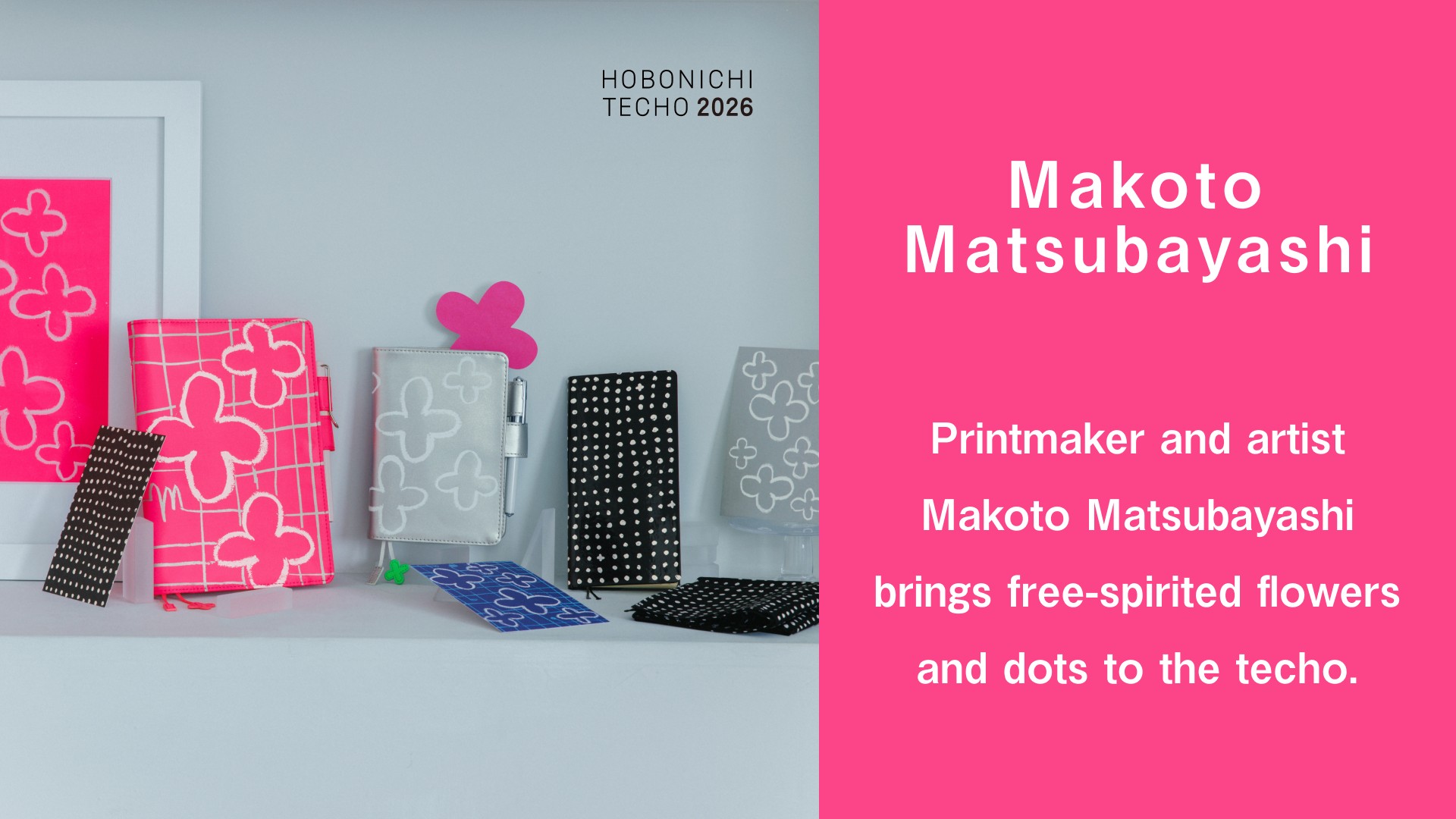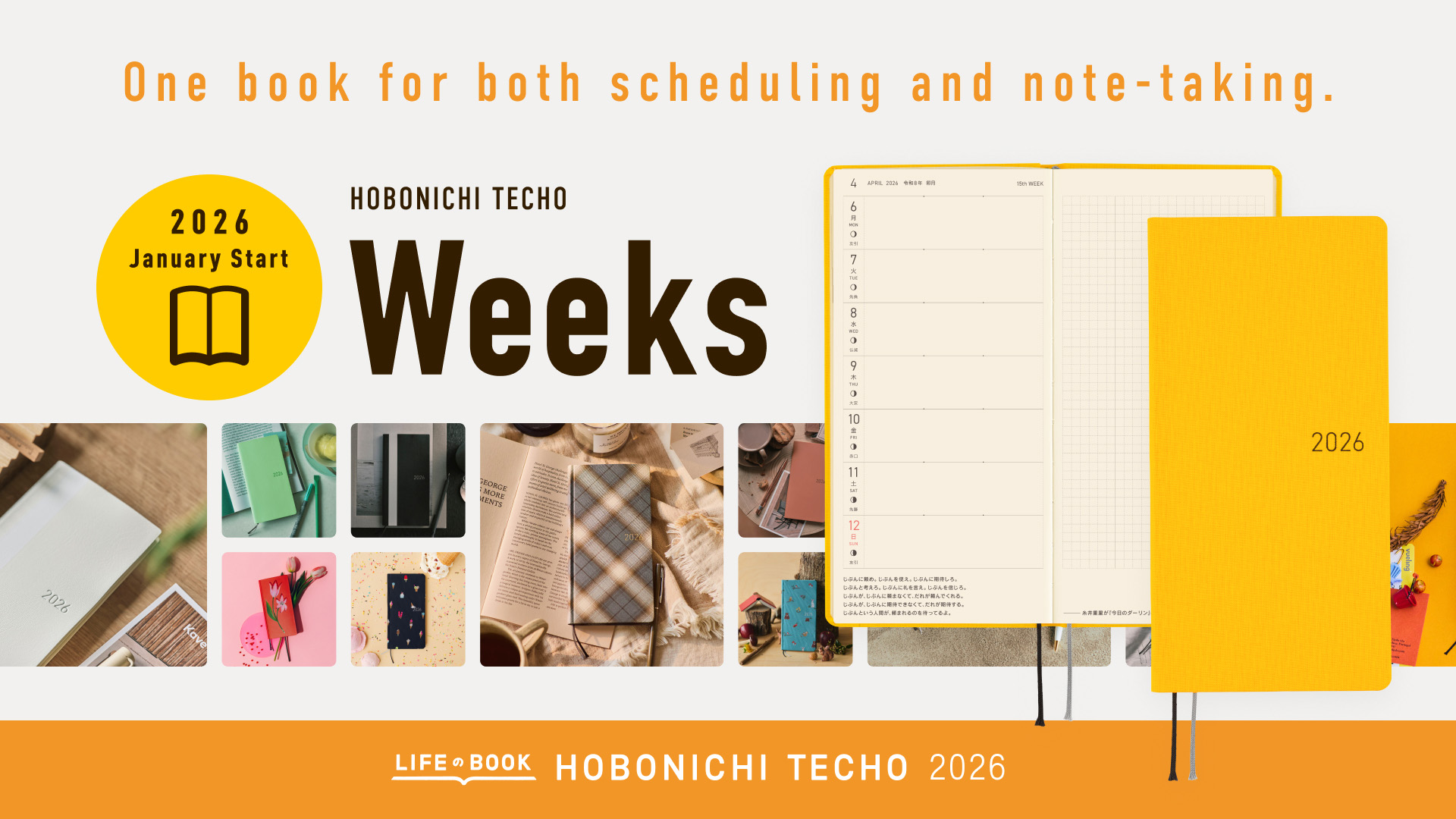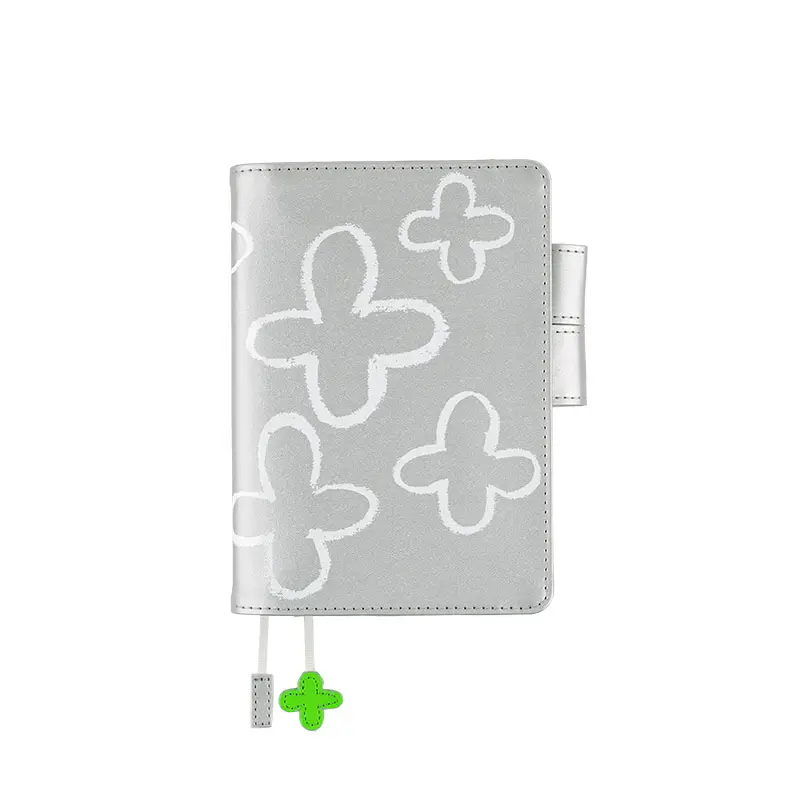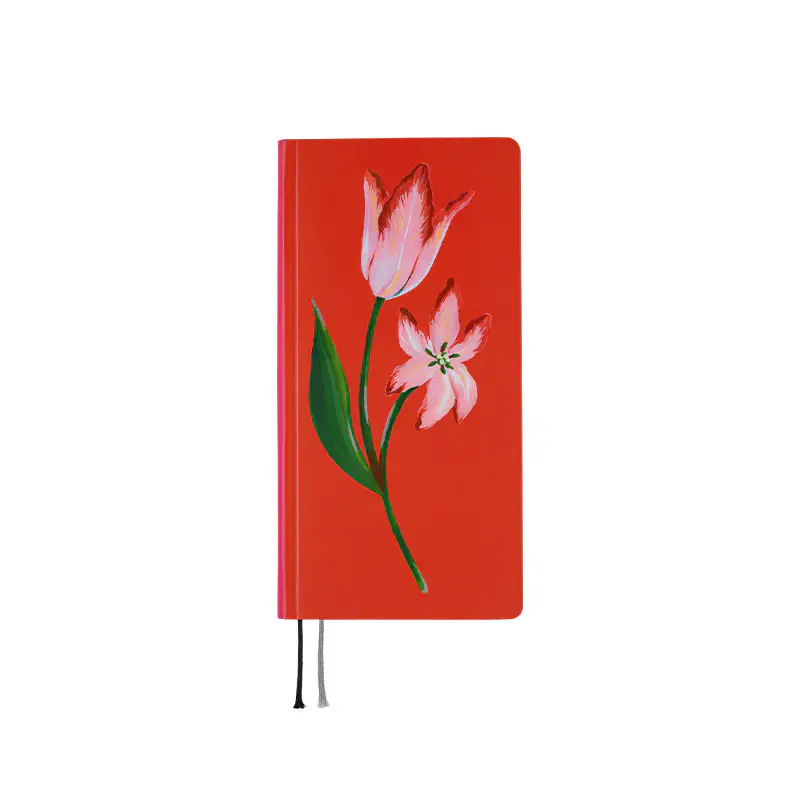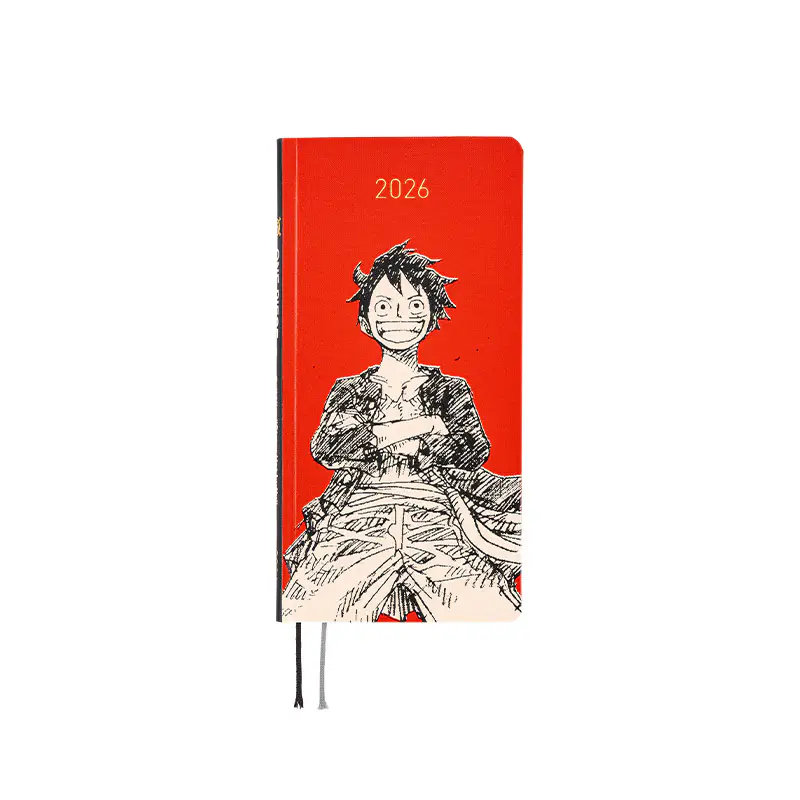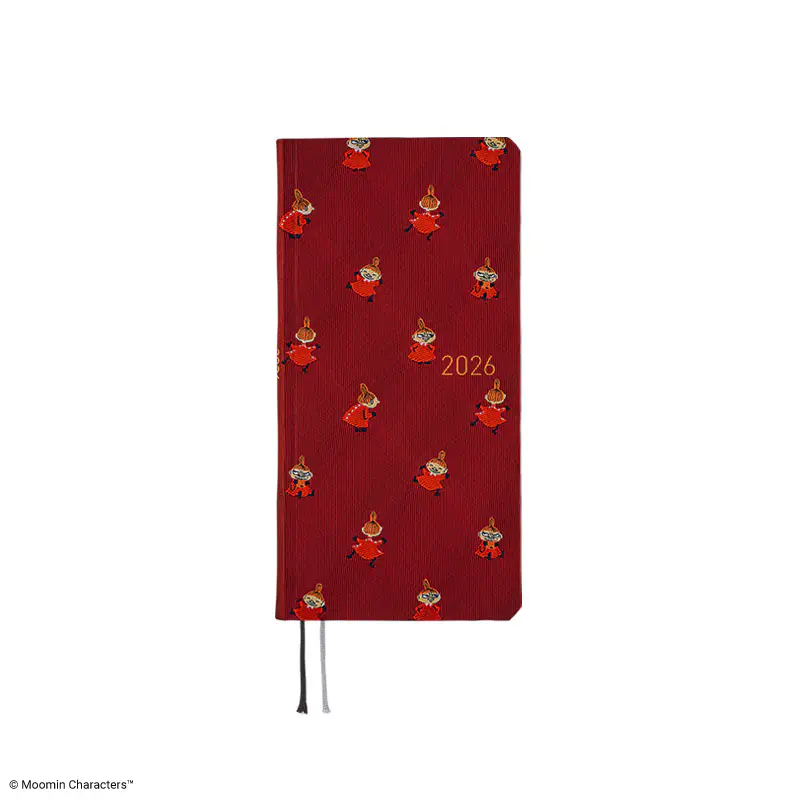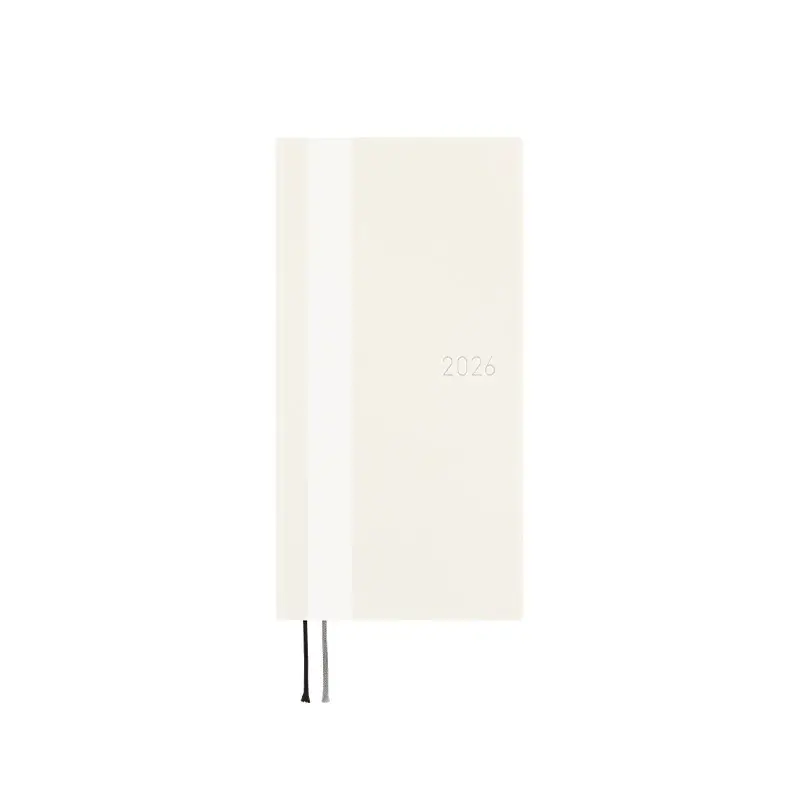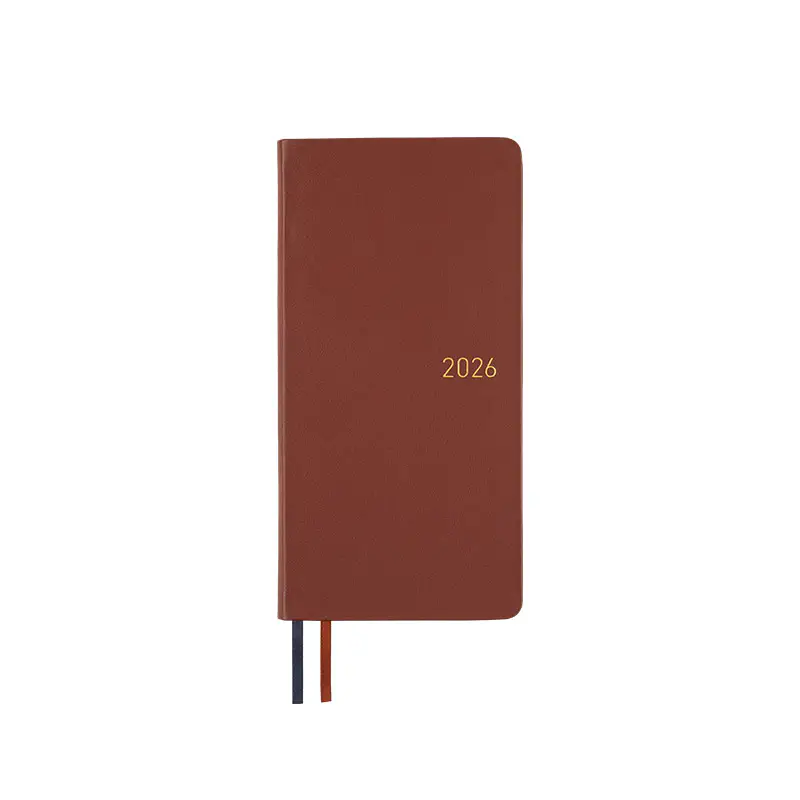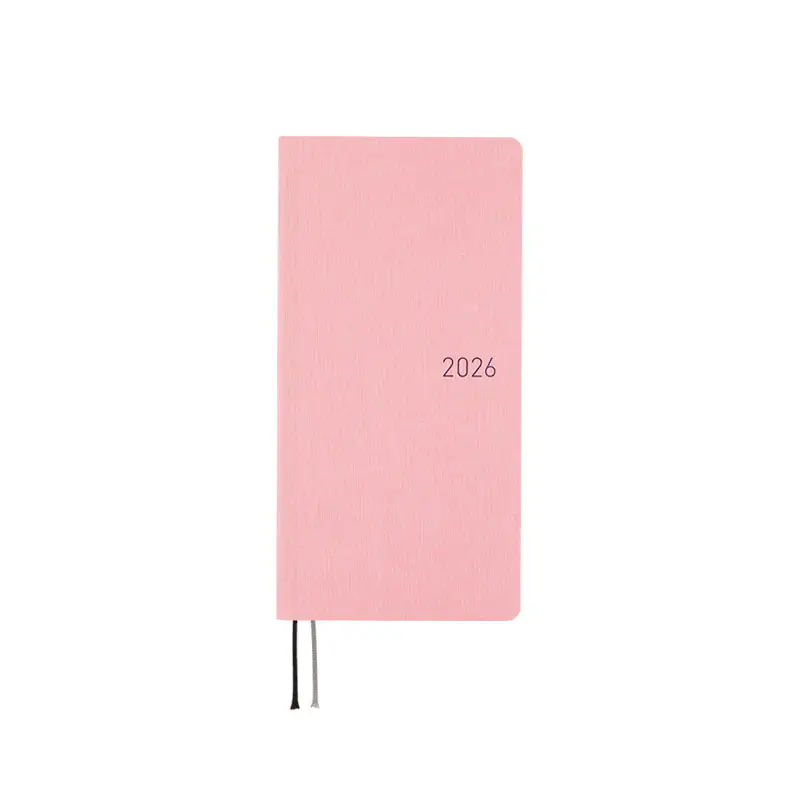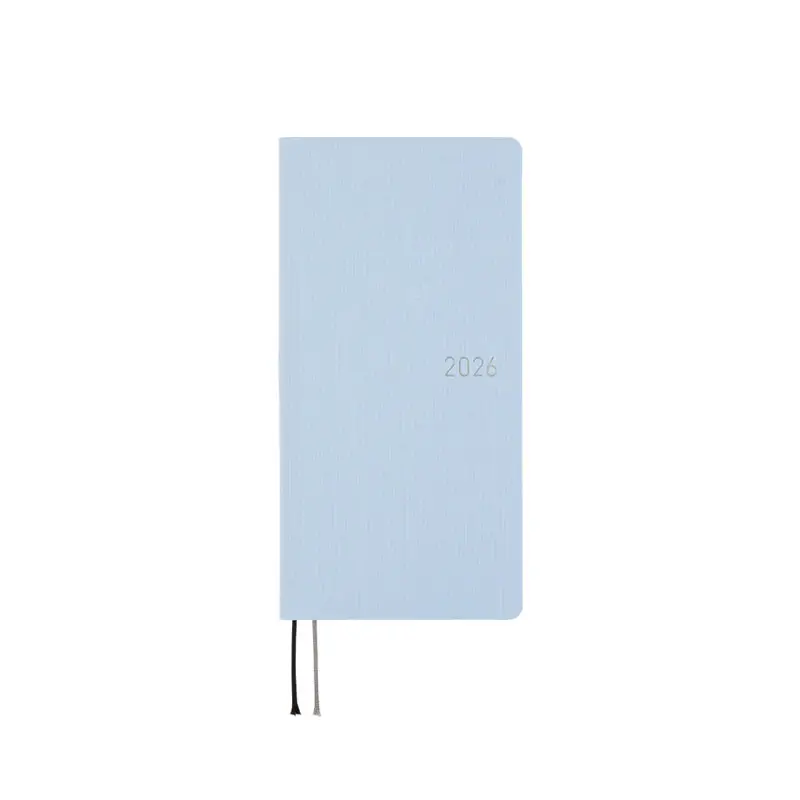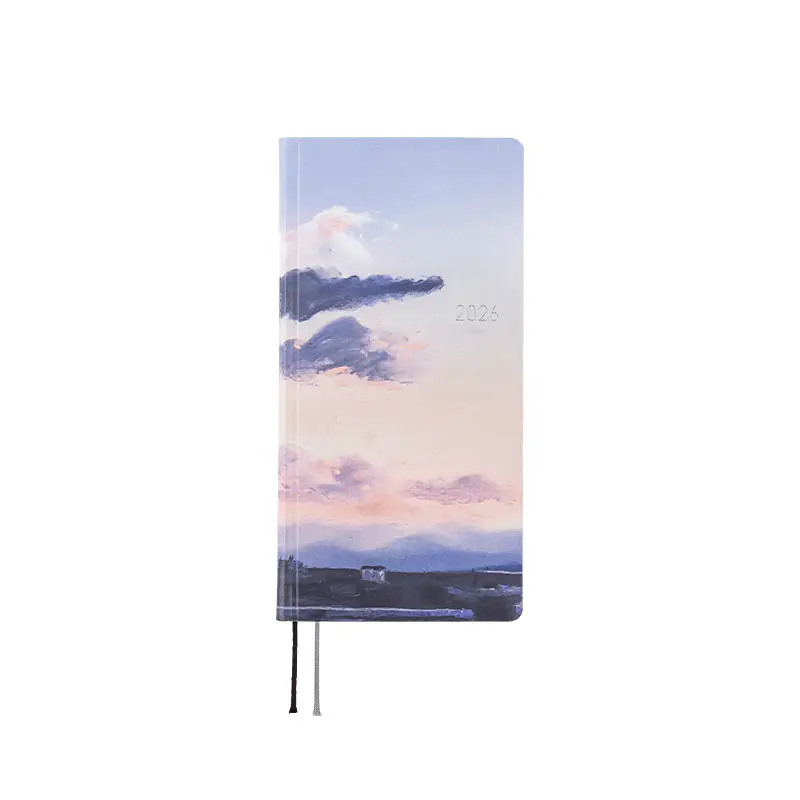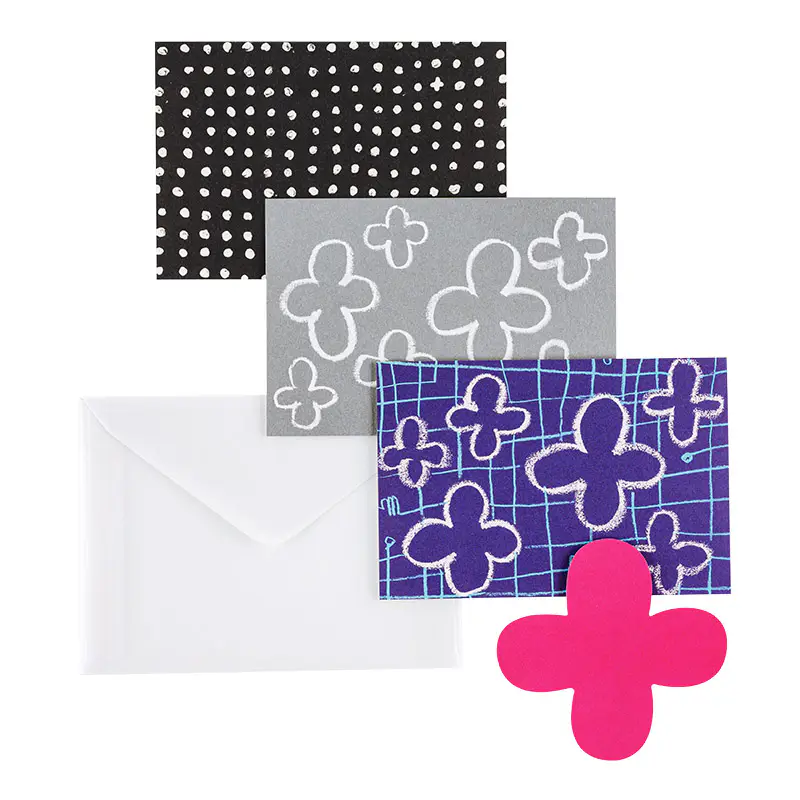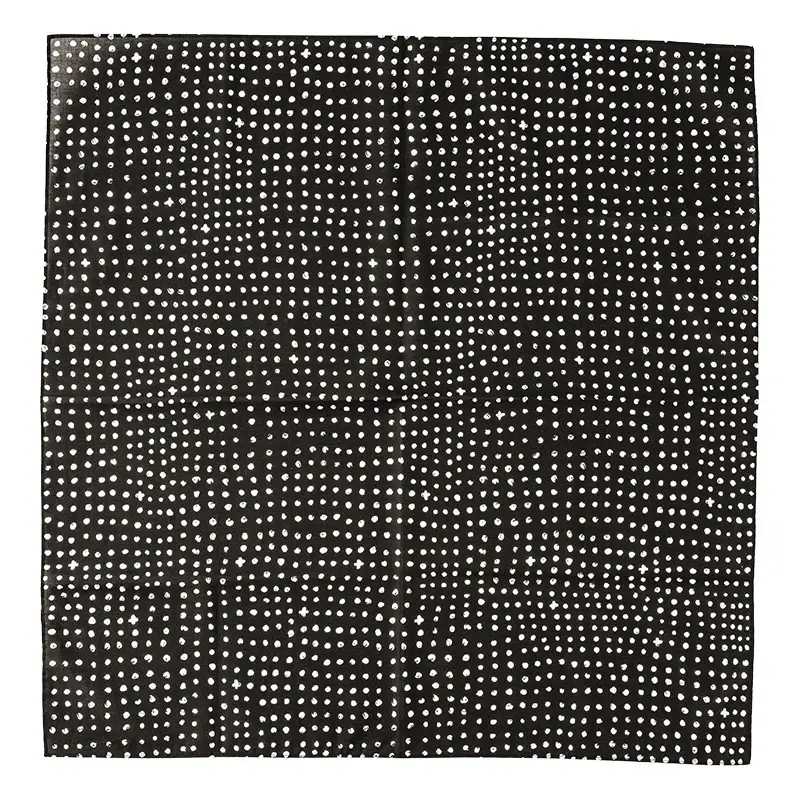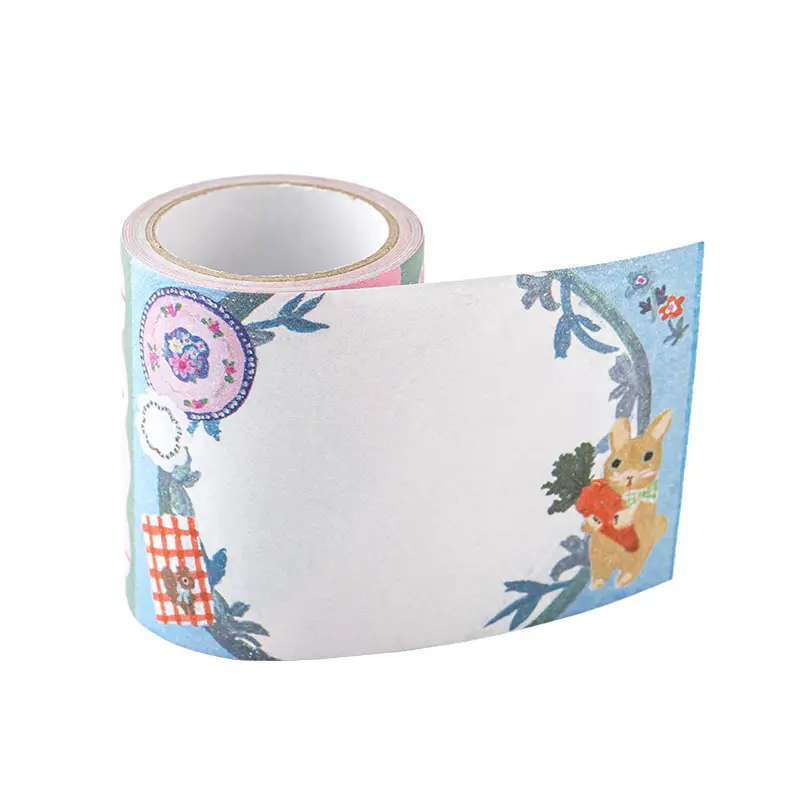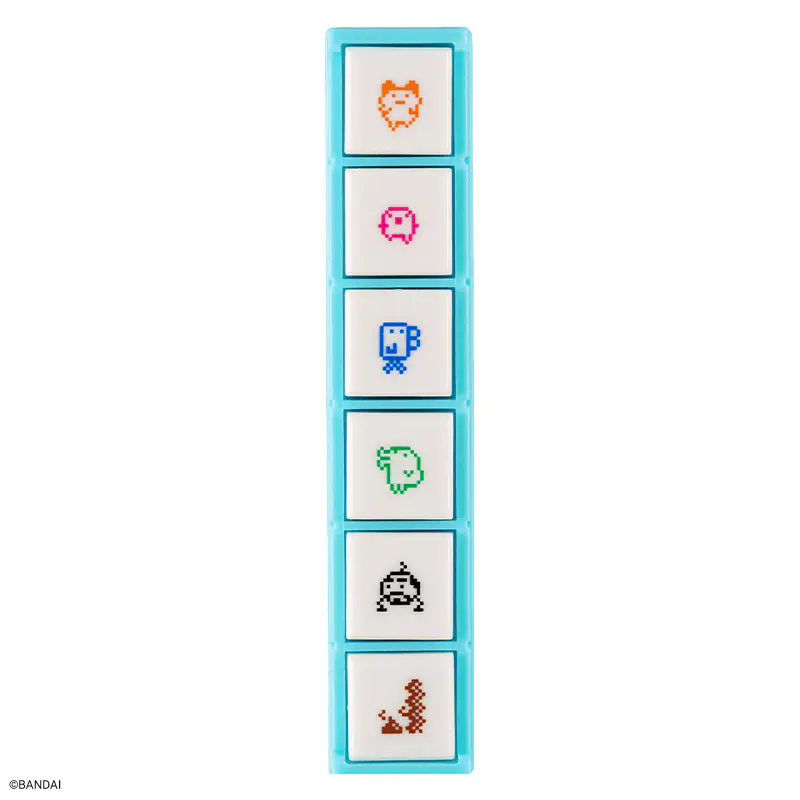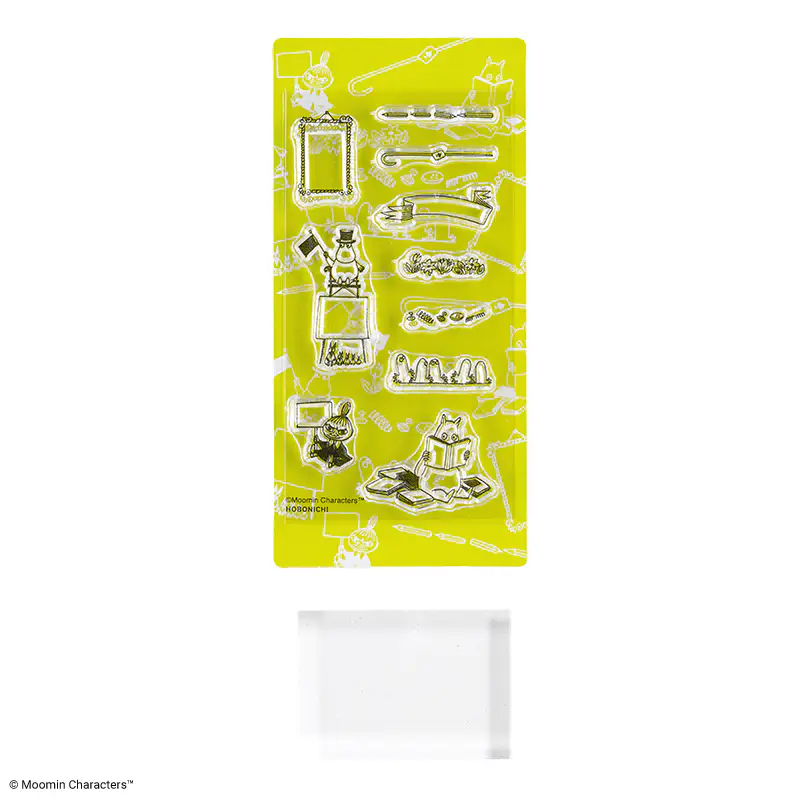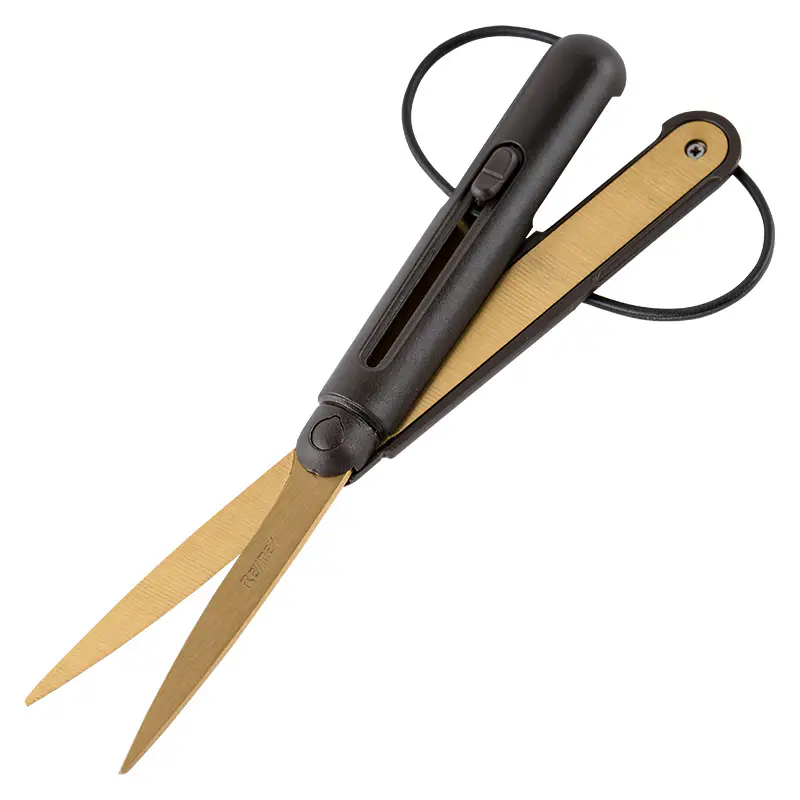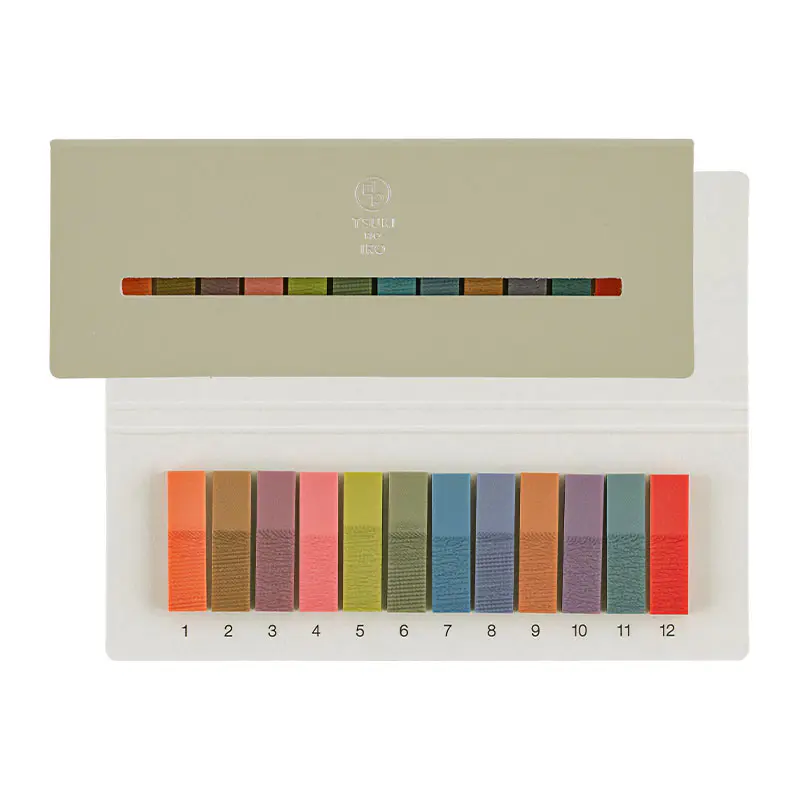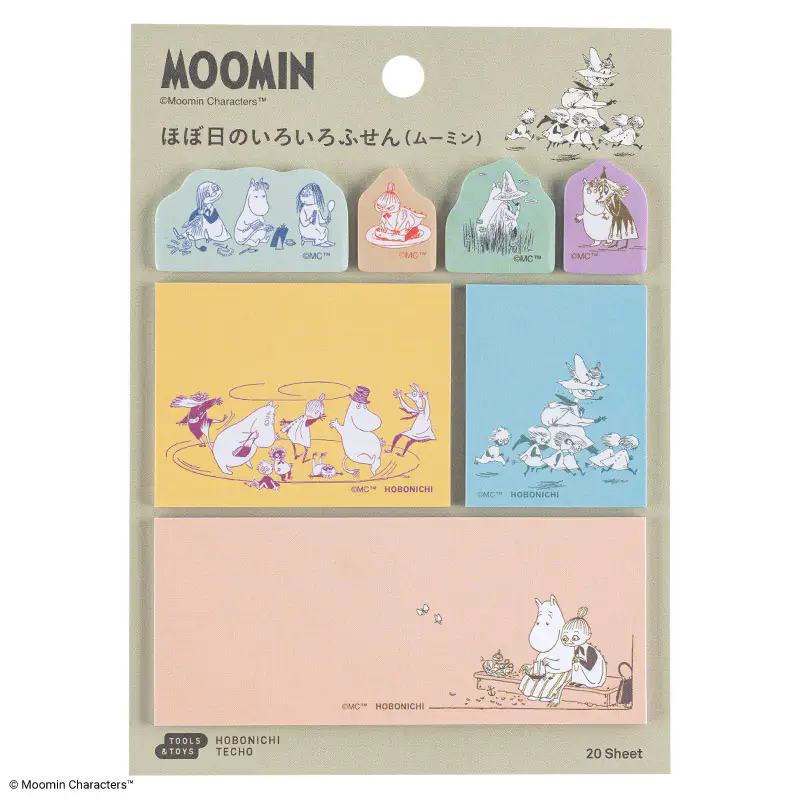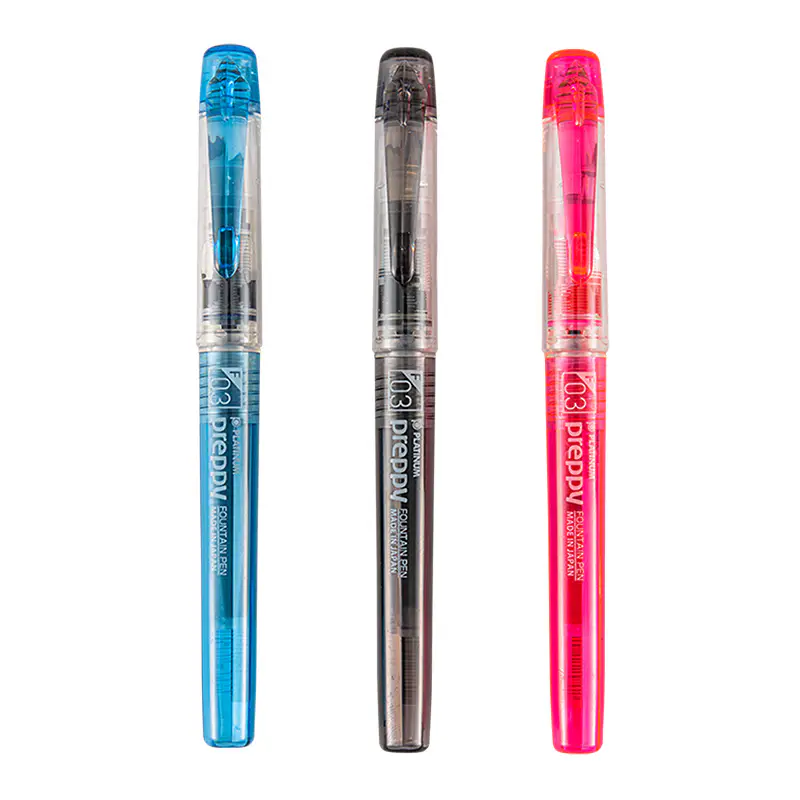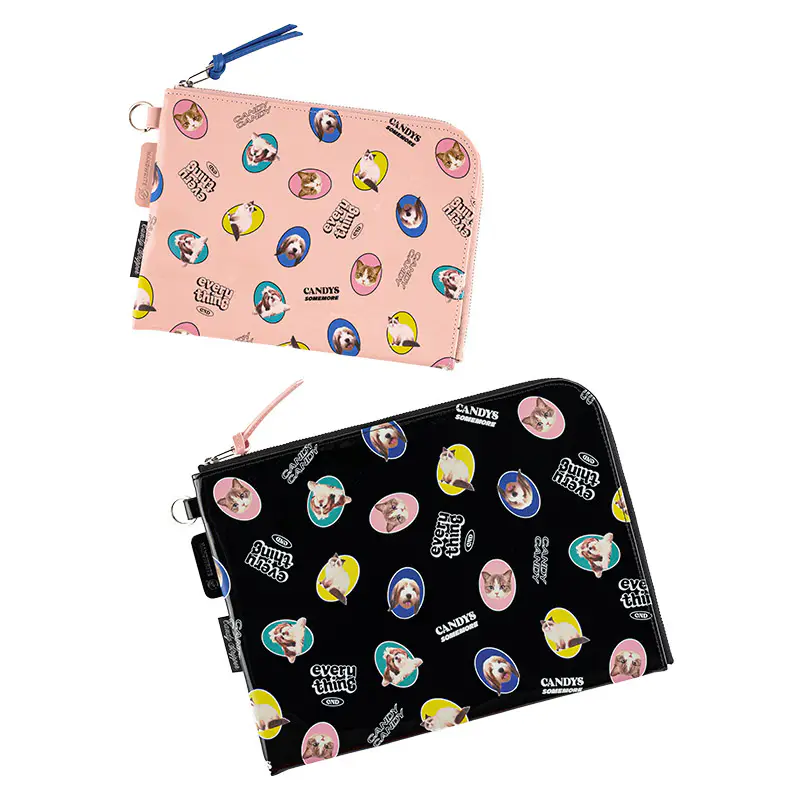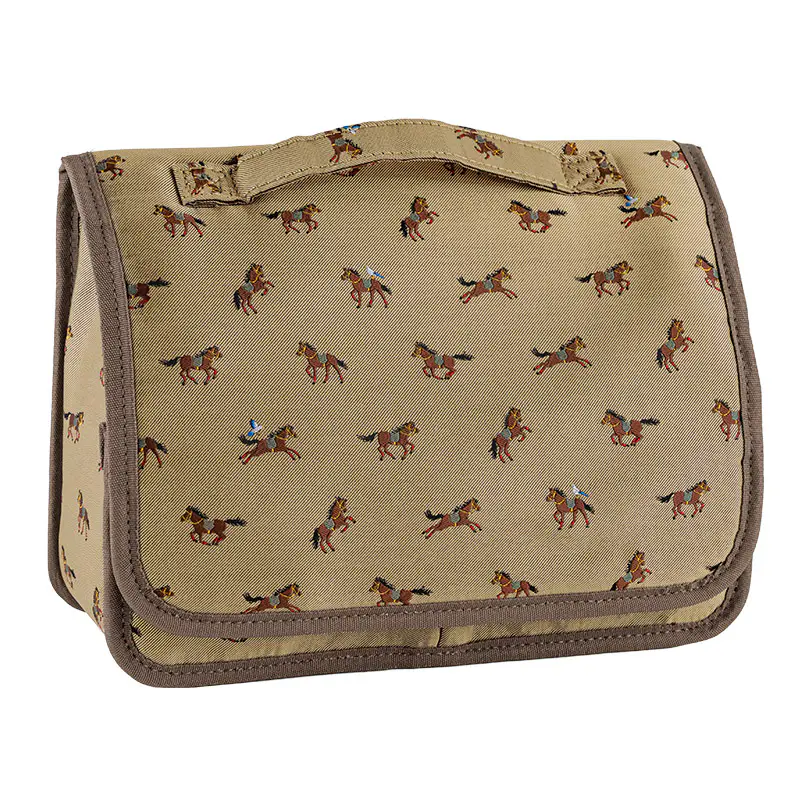Makoto MatsubayashiDotWeeks Hardcover Book / Weekly Horizontal / ENG or JPN edition / Jan start / Mon start
- 2026 New
This Weeks features a drawing by printmaker and artist Makoto Matsubayashi, who is based in Kochi Prefecture.
Painted with free-flowing brushstrokes, white dots stand out boldly against a black background. Though the design is refreshingly simple, with no extra embellishment, the subtle wavering and fading of the hand-drawn lines bring a gentle warmth to the overall look.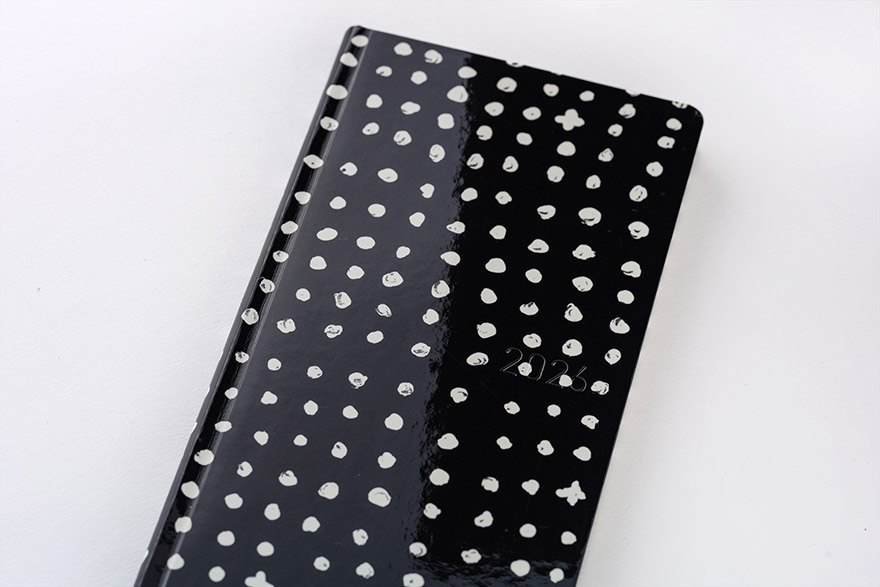
The cover has a glossy finish that enhances the contrast between the black and white, giving the design both a refined and playful feel.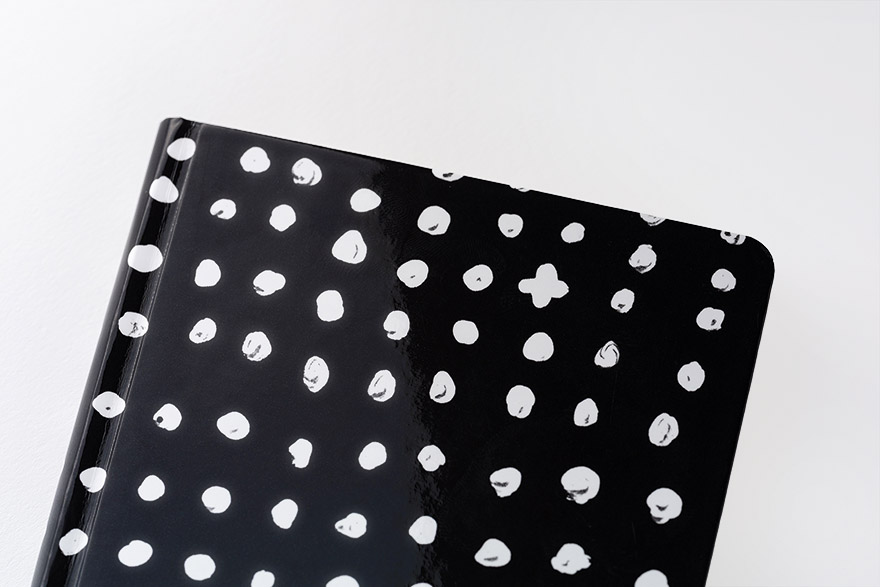
Take a closer look and you’ll spot something special—tiny hand-drawn flowers tucked here and there among the dots. Each one is unique, adding a whimsical touch to the minimalist design.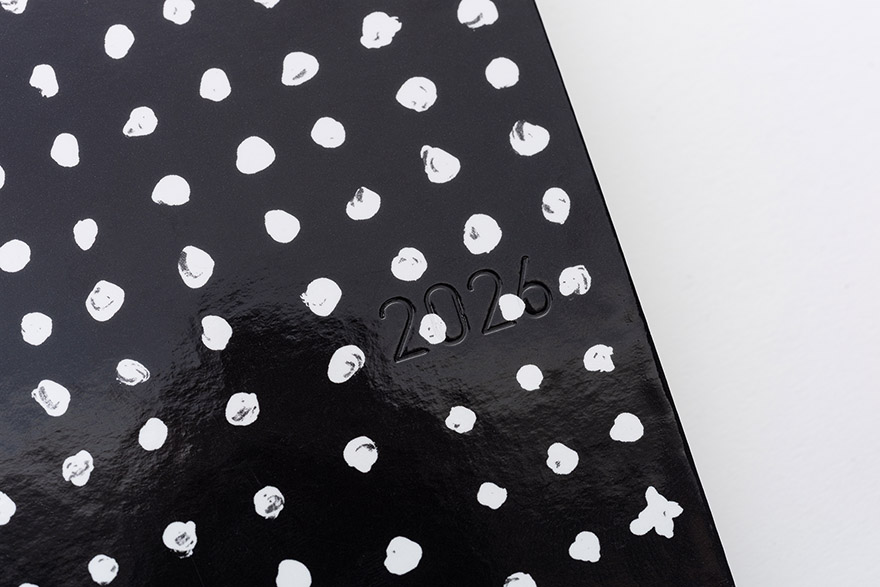
The year 2026 is subtly stamped on the cover using blind embossing.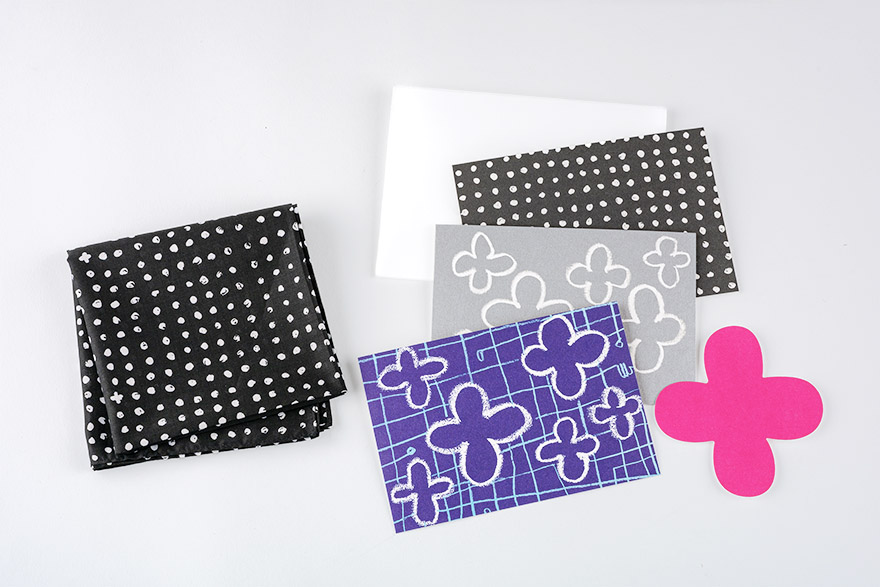
This design is part of a wider collection that includes stationery and accessories to match your techo cover or Weeks.
Why not spend your 2026 alongside this charming Weeks design by Makoto Matsubayashi?

When you order this Hobonichi Techo Weeks, you’ll receive a clear, adhesive corner pocket you can stick anywhere you like.
The book uses thin and light yet durable Tomoe River paper. It's characterized by its ability to hold ink well and provide a smooth writing experience.
The Weeks book has space for writing in plans or journal entries, and it also has 71 pages of grid paper memo pages in the back (75 pages in the English edition). The back of the book contains bonus pages, including Memories 2026 and 12 Switches to Help You Focus.
If you’d like storage space or a way to change up the look of your Weeks book, you can customize your book by pairing it with a Weeks cover.
See Weeks cover lineup
About Makoto Matsubayashi
Born in Kochi City, Kochi Prefecture in 1962. Printmaker and artist. After studying printmaking at Sokei Academy of Fine Art & Design, began pursuing his art in Kochi in 1991. Won the grand prize for “The Choice” award in 1995. Spent a year in 2000 working at the Cité internationale des arts in Paris, and worked on artwork for the 7days Hotel in Kochi in 2003. Now he regularly holds exhibits in galleries and art museums around Japan, as well as in Taipei.
http://makotoprint.com/
Introduction to the Makoto Matsubayashi series products
(Hobonichi Techo 2026 lineup)
Staff List
- Photographer
- Styled Images: Yuki Nasuno / Product Detail: Hiroyuki Oe
- Stylist
- Mari Nagasaka
Discover more (Techo)
![]()
- ¥7,700 - ¥8,690
- ¥5,280
![]()
- ¥9,900 - ¥11,550
- ¥6,380
![]()
- ¥3,190 - ¥3,300
![]()
- ¥3,190 - ¥3,300
![]()
- ¥3,190 - ¥3,300
![]()
- ¥3,190 - ¥3,300
![]()
- ¥3,190 - ¥3,300
![]()
- ¥2,860 - ¥2,970
![]()
- ¥4,950 - ¥5,060
![]()
- ¥2,860 - ¥2,970
![]()
- ¥2,860 - ¥2,970
![]()
- ¥3,190 - ¥3,300
Discover more (Accessories)
![]()
- ¥990
![]()
- ¥1,540
![]()
- ¥770
![]()
- ¥1,320
![]()
- ¥1,320
![]()
- ¥1,430
![]()
- ¥660
![]()
- ¥660
![]()
- ¥110 - ¥550
![]()
- ¥720
![]()
- ¥4,730 - ¥5,830
![]()
- ¥4,400
Specifications*Specifications may vary slightly
Size H: 188 x W: 94 x T: 11 mm / H: 7.4" x W: 3.7" x T: 0.4" Weight Approx. 135 g Main material Glossy paper (PP coated) / Paper Compatible Techo Covers
- Weeks Book (English / January Start)
Language English Pages 240 pages Paper Type / Binding Thin, light Tomoe River paper that is smooth to write on and designed for planners / Stitch-binding Graph Paper Size 3.55 mm
*Monthly calendar pages are 3.4 mmStart of Week Monday-start week Yearly Calendar 2025, 2026, 2027 Yearly Index Jan. - Dec. 2026 (2 pages) Monthly Calendar Dec. 2025 - Mar. 2027 (32 pages) Daily Quotes One per week (English) Weekly Pages Dec. 1, 2025 - Jan. 3, 2027 (114 pages)
*All weekly pages include quotes.Graph Paper 75 pages Bonus Pages Useful Abbreviations / Using Things around You to Measure Size / Favorites / My 100 / Memories 2026 / 12 Switches to Help You Focus / 365 Days Check-Off Sheet / Addresses / Personal Notes Listed Information Week of the year / Moon phase (weekly pages include every phase, monthly calendars only include full and new moon) Other See the Exploring Each Type page for more details
- Weeks Book (Japanese / January Start)
Language Japanese Pages 240 pages Paper Type / Binding Thin, light Tomoe River paper that is smooth to write on and designed for planners / Stitch-binding Graph Paper Size 3.55 mm
*Monthly calendar pages are 3.4 mmStart of Week Monday-start week Yearly Calendar 2025, 2026, 2027 Yearly Index Jan. - Dec. 2026 (2 pages) Monthly Calendar Dec. 2025 - Mar. 2027 (32 pages) Daily Quotes One per week (Japanese) Weekly Pages Dec. 1, 2025 - Jan. 3, 2027 (114 pages)
*All weekly pages include quotes.Graph Paper 71 pages Bonus Pages 365 Days Check-Off Sheet / Using Things around You to Measure Size / My 100 / Memories 2026 / 12 Switches to Help You Focus / Solar Terms / Emergency Preparedness / Age Table / Conversion Chart / Getting the most of Hobonichi / Contact List / Personal Notes Listed Information Week of the year / Rokuyo (traditional Japanese calendar) / Solar terms / Japanese holidays / Moon phase (weekly pages include every phase, monthly calendars only include full and new moon) Other See the Exploring Each Type page for more details
User recommendations
If you’ve used any of these products, we welcome your notes on what you like about them or what led you to buy them so we can share it with customers who are currently considering these products. We’d also love to welcome comments from customers who purchased their techo outside the Hobonichi Store or received their book as a gift.
Please Read Before You Buy
We’ve compiled a list of warnings, potential issues, and tips to keep in mind for this particular product. Additionally, the color of the product may be slightly different in actuality than compared to how it appeared on a computer or smartphone screen.
- Press marks or shines may appear on the corners
You may notice press marks, slight whitening, or a glossy finish on the corners of the front and back covers. These are unavoidable results of the binding process.
- About the paper used (techo)
The Tomoe River paper designed for planners is known for its thinness and smooth writing surface. However, depending on the type and amount of ink or pen used—as well as environmental conditions—some ink may bleed through or take longer to dry. We recommend testing your pens on an inconspicuous area first, or using a pencil board or blotting paper for best results.
